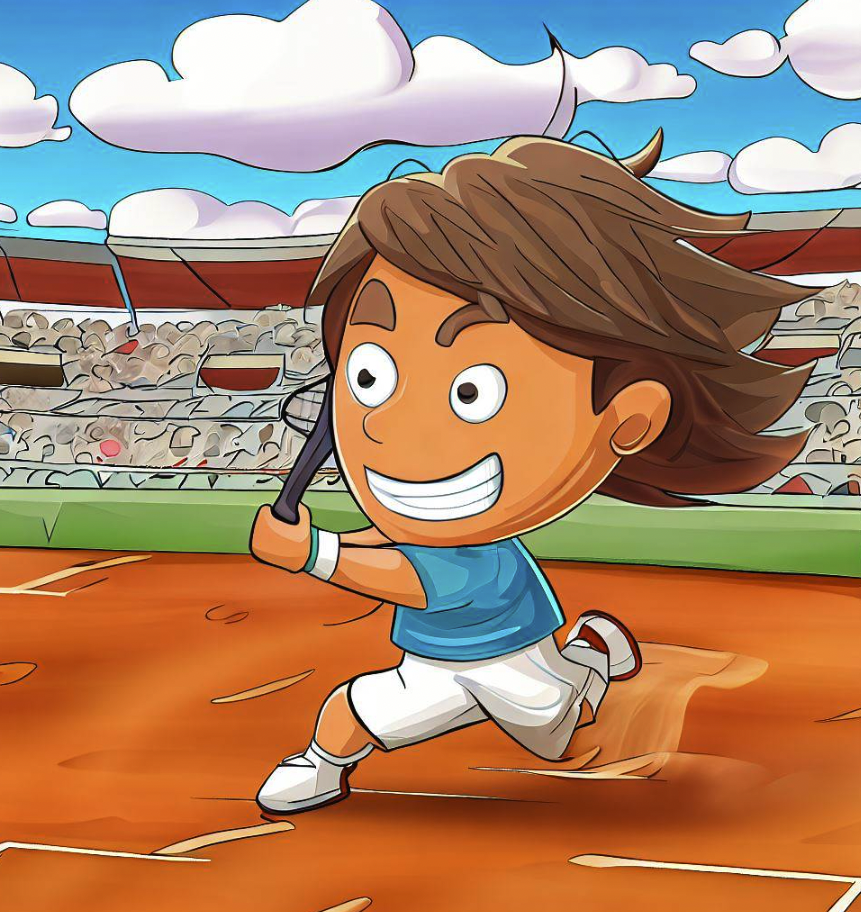Rafael Nadal, often nicknamed “The King of Clay,” is widely recognized as the most dominant player in the history of clay court tennis.
His record on this unique surface is unparalleled, with multiple titles at the French Open, also known as Roland Garros, which is played on clay.
But what is it about clay, and about Nadal’s game, that has created such a powerful synergy?
This article will explore the various factors that have contributed to Nadal’s clay court dominance.
Understanding the Nature of Clay Courts
To understand Nadal’s prowess on clay, it’s essential first to understand the unique characteristics of clay courts.
Clay courts are slower than grass and hard courts, leading to longer rallies.
The ball bounces higher and more unpredictably, which can throw off players not used to the surface.
These features align perfectly with Nadal’s game.
Here is a direct account from someone who played Nadal on clay:
Playing Nadal on Clay – My Experience
Nadal’s Physical Attributes and Style of Play
Nadal is a left-handed player, which already gives him a strategic advantage as it often presents a different spin and angle of shots that right-handed players are less accustomed to facing.
Nadal’s topspin-heavy style of play, aided by his exceptional physical strength and endurance, perfectly complements the high bounce of the clay court.
His aggressive baseline play and extraordinary defensive skills also thrive in the longer rallies common on clay.

Mental Toughness and Strategic Brilliance
Nadal’s mental toughness and strategic acumen are key components of his success on clay.
His capacity to stay focused and resilient, even in the most grueling matches, is legendary.
Furthermore, his ability to adjust his strategy mid-match to exploit his opponent’s weaknesses is a testament to his deep understanding of the game.
Why Nadal is the King of Clay
Specialization and Preparation
Nadal, a native of the Spanish island of Mallorca, grew up playing on clay courts.
His early specialization on this surface has given him an inherent familiarity and comfort with its demands.
Additionally, Nadal’s rigorous physical preparation, which includes specialized training to maintain his stamina and resilience for the long rallies and matches typical on clay, also contributes significantly to his success.
Nadal’s Rivalries on Clay
Nadal’s rivalries with other players, particularly Roger Federer and Novak Djokovic, have played a significant role in his clay court narrative.
His head-to-head record against these formidable opponents on clay speaks volumes about his dominance.

Conclusion
In conclusion, a combination of physical attributes, mental toughness, strategic understanding, specialized preparation, and significant rivalries all contribute to Rafael Nadal’s remarkable success on clay courts.
His legacy on this surface is a testament to his adaptability and mastery of the game, setting a standard that will be challenging for future generations to match.
FAQs – Why Makes Nadal So Good on Clay?
What makes clay courts different from other types of courts in tennis?
Clay courts have a unique set of characteristics that distinguish them from hard courts and grass courts.
They are slower, meaning the ball travels at a slower pace after it bounces, leading to longer rallies.
The ball also bounces higher and more unpredictably on clay, which can disrupt the timing and rhythm of players who are not accustomed to this surface.
How does Nadal’s left-handedness contribute to his success on clay?
Nadal being left-handed provides him with a natural strategic advantage on any surface, not just clay.
The majority of tennis players are right-handed, so they are less accustomed to the angles and spins produced by a left-handed opponent.
On clay, this advantage is amplified due to the slower, higher-bouncing nature of the surface, which can make Nadal’s heavy topspin forehand particularly challenging to handle.
What specific aspects of Nadal’s style of play make him so effective on clay?
Nadal’s style of play is characterized by aggressive baseline play, extraordinary defensive abilities, physical strength, and a heavy topspin forehand.
All these elements are particularly well-suited to the characteristics of clay courts.
His aggressive baseline game allows him to dictate the pace of the rallies, his defensive skills help him stay in points longer, and his topspin forehand works excellently with the high bounce of clay courts.
How does Nadal’s mental toughness influence his performance on clay?
Mental toughness is a crucial factor in any sport, and tennis is no exception.
Nadal is renowned for his resilience and ability to stay focused, even in the most high-pressure situations.
This mental fortitude allows him to outlast opponents in the long, grueling rallies that are common on clay courts.
His strategic acumen, such as his ability to adjust his game plan to exploit his opponent’s weaknesses, is also a key component of his success.
How has Nadal’s early specialization and training on clay courts influenced his dominance on this surface?
Growing up in Mallorca, Spain, Nadal spent a significant portion of his developmental years playing on clay.
This early and intense exposure to the surface allowed him to become extremely comfortable with its unique demands.
Additionally, his training regimen is specifically designed to build his endurance and resilience, preparing him for the long matches that are typical on clay.
How have Nadal’s rivalries shaped his success on clay courts?
Nadal’s rivalries, particularly with Roger Federer and Novak Djokovic, have played a key role in his clay court narrative.
The intense competition has pushed him to continuously improve and adapt his game.
His head-to-head record against these opponents on clay is a testament to his exceptional skills and dominance on this surface.


